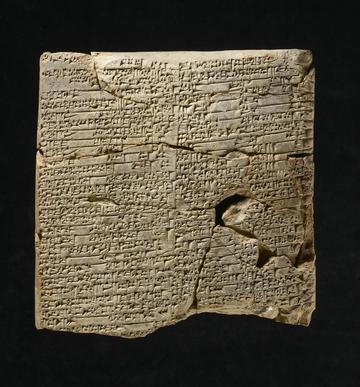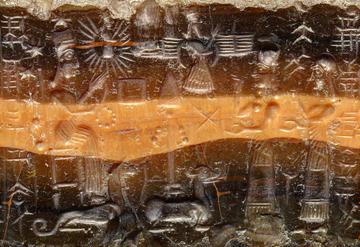Assyriology BA (Hons) and Egyptology BA (Hons)
In the Near East (Babylonia and Assyria) and Egypt, ancient cultures developed that are often seen as foundations of the modern world. Understanding these unique societies is an exciting and rewarding intellectual challenge.
In these degrees, reading original sources in the ancient languages and scripts is integrated with the study of material culture and artefacts.
The core of the teaching is in Akkadian and Egyptian language and texts. The aim is for you to understand Ancient Near Eastern and Egyptian cultures more broadly and to use written sources as a point of departure for studying a wide range of aspects, such as history, religion, poetry, law, economy, and archaeology. Both degrees include artefact classes in the Ashmolean Museum.
The skills involved are comparable with those needed for similar courses in the humanities based on language. We do not expect you to have any prior knowledge of the languages before you apply.
Please note that the current degree title BA in Egyptology and Ancient Near Eastern Studies is changing to BA in Assyriology for students starting the Assyriology (Ancient Near Eastern Studies) course in 2025 or later. The course content will remain exactly the same but, in the new structure, the Egyptology course will lead to a BA in Egyptology (UCAS code Q400), and the Ancient Near Eastern Studies course will lead to a BA in Assyriology (UCAS code Q401).
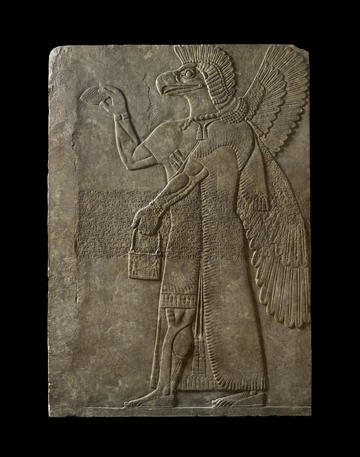
AN1982.224, Relief of winged genius with cuneiform inscription of Ashurnasirpal II, Assyrian, 9th century BC, gypsum, Nimrud, Iraq © Ashmolean Museum, University of Oxford
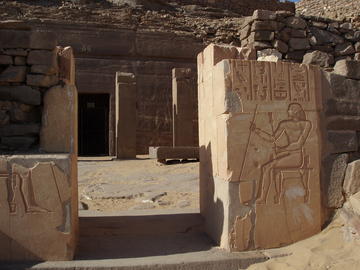
The tomb-complex of the local governor Sarenput I at Aswan, whose image and titles decorate the entrance to the courtyard (c. 1875 BC). Photo: © Professor Richard B. Parkinson
Choosing a degree course in Assyriology or Egyptology
The BA in Assyriology and the BA in Egyptology are two related three-year degree courses offering a wide range of options in the cultures, history, and literatures of the Ancient Near East and/or Egypt. Two related but distinct courses of study are available. You choose one of the following:
- The Assyriology course, concentrating on the Ancient Near East and the Akkadian language of Babylonia and Assyria. This course is currently within the BA in Egyptology and Ancient Near Eastern Studies but this degree title is changing to BA in Assyriology. There will be no change in course content.
- The Egyptology course, concentrating on ancient Egypt and the Egyptian language. This course is accessed through the BA in Egyptology.
Both degree options offer a wide range of options in the cultures, history, and literatures of the Ancient Near East and/or Egypt. In the last two years of your course, you will also choose a subsidiary language or subject to study alongside Assyriology or Egyptology.
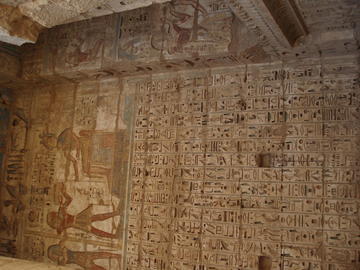
Text and images combined in honour of Ramses III (1187-1156 BC) on the walls of his funerary temple at Medinet Habu on the west bank of the Nile at Luxor. Photo: © Professor Richard B. Parkinson
Overview of the Course
First Year: Foundations of Language, History, and Culture
In your first year you gain a solid grounding in either Akkadian or Egyptian, as well as in the history and culture of the broader Ancient Near East, with a focus on Mesopotamia and Egypt. You have intensive language classes from the start. You learn Akkadian if you choose the Assyriology course, and you learn Middle Egyptian if you choose the Egyptology course.
Once you have covered the grammar, you begin reading key texts. By the second term, you will be reading material such as extracts from the Laws of Hammurapi or biographical inscriptions displayed on the tombs of Egyptian officials. In class, you also practice translating from these ancient texts. The written works you study are considered in their ancient contexts. In class tutors and students discuss the texts’ meaning, significance, and the kinds of evidence they give us about the cultures that created and used them.
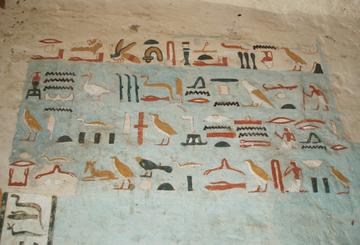
An unfinished autobiographical text from the tomb of local governor Sarenput II, Aswan, around 1840 BC; the unfinished state of his tomb suggests that he must have died unexpectedly young. Photo: © Professor Richard B. Parkinson
Complementing the language classes is a lecture course for all first-year students in Mesopotamian and Egyptian Culture and History. This includes detailed study of Ancient Near Eastern history into the Parthian period and Egyptian history to the Byzantine period. You write ten essays over the course of the year, on both Mesopotamian and Egyptian topics.
In your third term, towards the end of your first year, you need to sit and pass a Preliminary Examination.
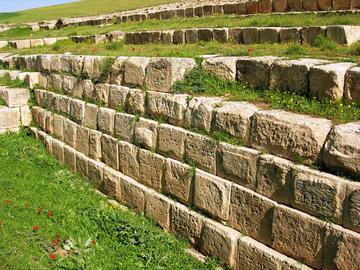
Sennacherib's aqueduct at Jerwan, Assyrian (c. 700 B.C.), Iraqi Kurdistan © Professor Frances Reynolds
Second and Third Years: In-Depth Study and Options
You continue expanding your knowledge of your main language. For Akkadian you work with cuneiform texts and learn to read at least one more dialect of Akkadian, building on your first-year work in Old and Standard Babylonian. For Egyptian, you also learn Old or Late Egyptian from the start of your second year, and you learn to read hieratic, the cursive form of the Egyptian script.
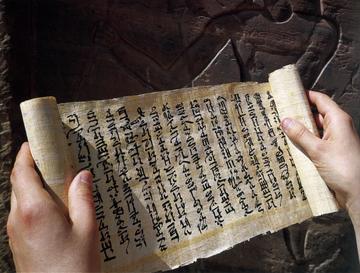
A modern facsimile of a papyrus roll, written in cursive hieratic, with the poem The Life of Sinuhe (a text read in the third year of the Egyptology course) Photo: © Professor Richard B. Parkinson
In classes in the Ashmolean Museum, you study artefacts made of different materials from a range of periods. You have the option of studying both Mesopotamian and Egyptian artefacts, regardless of your course, and you learn how to describe them.
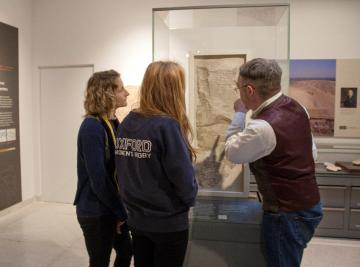
Professor Richard B. Parkinson leading an undergraduate Egyptology class at the Ashmolean Museum
You choose a Special Option, on a topic of your choice. These are very flexible, and depending on availability sometimes it is possible to select a subject tailored just for you or for a small group of two or three students. Examples of special options include:
- Astronomy in context in the first millennium BC in Mesopotamia
- Babylonian omens and prevention rituals
- Akkadian Late Bronze Age texts
- Egyptian art and architecture
- Middle Kingdom literature
- Hieroglyphic texts of the Graeco-Roman period
The subject choice in any given year can change depending on staff availability—our tutors often draw on their particular areas of expertise to offer these optional subjects. You can see the lists of options for this year in the Assyriology Handbook and the Egyptology Handbook.
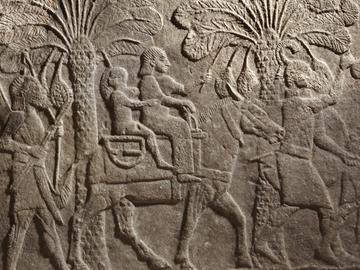
AN1933.1575 Relief depicting a campaign in Babylonia, woman and child captives riding on mule escorted by Assyrian soldiers (detail), gypsum , Assyrian (704-681 BC), Nineveh, Iraq © Ashmolean Museum, University of Oxford
In consultation with your tutors, you also choose a second subject to study alongside either Assyriology or Egyptology in your second and third years. This subject could be either a subsidiary language, or Archaeology and Anthropology.
Depending on your course and the availability of teaching each year, you can choose from the following subsidiary languages:
| Additional Language | With Akkadian main language | With Egyptian main language |
|---|---|---|
| Akkadian | No | Yes |
| Arabic | Yes | Yes |
| Aramaic and Syriac | Yes | Yes |
| Coptic | No | Yes |
| Demotic | No | Yes |
| Early Iranian | Yes | Yes |
| Egyptian | Yes | No |
| Hebrew (Biblical and Rabbinic) | Yes | Yes |
| Hittite | Yes | No |
| Sumerian | Yes | No |
Students study a subsidiary language to a level that equips them to read and translate from original texts, and they also learn about the language’s historical and cultural contexts. If you choose Archaeology and Anthropology as a second subject, you attend lectures and tutorials on ‘The Nature of Archaeological and Anthropological Enquiry’ and two further topics such as ‘Urbanism and Society’ and ‘Cultural Representations, Beliefs, and Practices'.
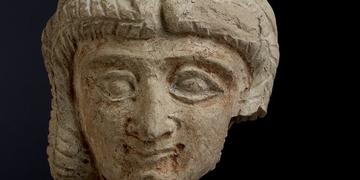
AN1976.74 Head of woman, terracotta, early 2nd millennium BC, southern Iraq © Ashmolean Museum, University of Oxford
You also write a dissertation of no more than 15,000 words on a topic of your choice, selected in consultation with your tutors.
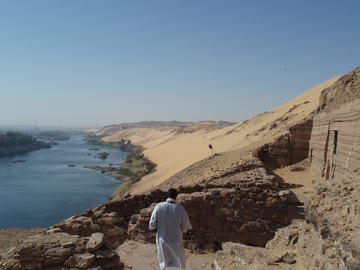
The rock-cut tombs of the local governors at Aswan, overlooking the Nile close to the first cataract. Photo: © Professor Richard B. Parkinson
Fieldwork and Internships
These courses do not include any fieldwork or periods of study abroad. However, the Faculty can support you with advice on subject-related travel and internships. Some undergraduate and graduate students usually take up summer internships at museums and other organisations with Egyptian and Near Eastern collections, such as the British Museum and the Ashmolean Museum.
Other ways to study Assyriology or Egyptology at Oxford
At undergraduate level, Akkadian or Egyptian may be taken as a subsidiary language with Hebrew as a main subject. Akkadian may also be taken as a subsidiary with Arabic. The joint degree of Classics and Asian and Middle Eastern Studies offers opportunities to combine courses across two Faculties. Assyriology or Egyptology can be studied as a main subject alongside Latin or Greek as a subsidiary language. Alternatively, Classics can be studied as a main subject, alongside Akkadian or Egyptian as a subsidiary language.
Where this course could take you
After the course, students have gone on to graduate research or other career paths, such as museums, publishing, journalism, performing arts, secondary school teaching, business, and law.
Learn more about Assyriology and Egyptology
The following reading lists prepared by our tutors can get you started learning more about Assyriology and Egyptology:


